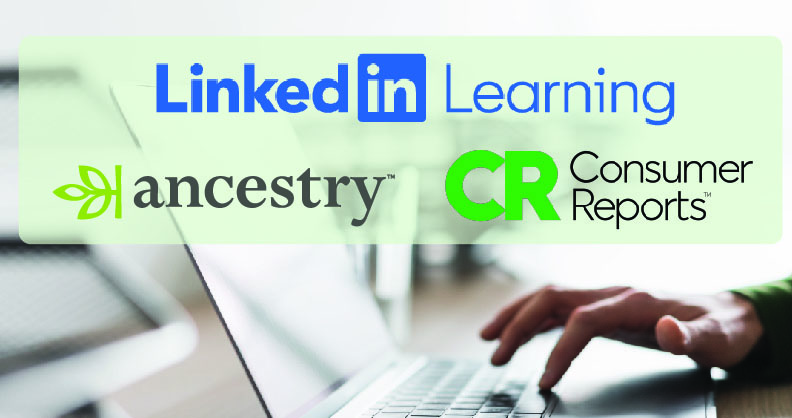 Romance Beyond Regency: Diverse Romance Novels
Romance Beyond Regency: Diverse Romance Novels
By Crystal Hicks, Adult Services Librarian
Like many Kansans, I took ill this winter and faced a day at home recuperating. Fortunately, my husband had Sonali Dev’s The Bollywood Bride checked out on his Kindle, so I decided to give it a whirl. One day later, I was feeling better and needed another book to read. Dev effortlessly combines Indian culture with all the trappings of a great romance novel, captivating me with a book unlike any other romance novel I’d read before. While I loved the romance, I also enjoyed reading about a different culture, and, after finishing it, I was eager to widen my reading scope and find other diverse romance novel gems.
Once I went looking, I found a variety of culturally-diverse contemporary romance to read. For instance, Alisha Rai’s Hate to Want You follows two third-generation immigrants who are torn apart by a family blood feud. Back in her hometown after her mother broke her hip, Livvy and Nicholas find themselves drawn to each other, despite all the reasons they should stay apart. Secondly, Latina author Priscilla Oliveras has just started a promising trilogy about three sisters, beginning with His Perfect Partner. Yazmine Fernandez works as a dance teacher in Chicago, where she teaches Maria and clashes with the girl’s workaholic father, Tomás Garcia. Inevitably, and oh, so sweetly, the pair are drawn to each other and the appeal of a being family together. Finally, in Cheris Hodges’s I Heard a Rumor, both Chante Britt and Zach Harrington are running from the press and decide to hide out at a South Carolina beach. When sparks fly, the two agree to start a fling, but feelings deepen and the press inevitably catches up with them.
When it comes to historical romance, Beverly Jenkins is the queen of writing about African American life and has been doing so for decades. Her most recent offerings include Forbidden, first in a series about life in the Old West. Rhine Fontaine has built up a successful life for himself by passing as White, but when he rescues a Black woman from the desert, all of his choices are thrown into question. Is it worth giving up everything he’s worked for in order to be with the stubborn, clever Eddy Carmichael? For a newer African American voice in the historical romance marker, look no further than Alyssa Cole. In An Extraordinary Union, Cole combines historical romance with espionage for a delightful read. Elle Burns and Malcolm McCall are both spies for the Union during the Civil War, and they must set aside their instant attraction in order to save their country.
When it comes to LGBTQ romances, I’ve been hearing a lot about Cat Sebastian, and it’s no wonder why. Sebastian writes queer historical romances, starting with The Soldier’s Scoundrel. Jack Turner is a lower-class fixer, helping people with problems that they can’t talk to the magistrate about. When Oliver Rivington, a gentleman and a former soldier, learns that his sister has used Jack’s services, his interest is piqued and he looks in on Jack’s business. Oliver’s interest is also piqued by Jack, and soon the two men are working to solve Jack’s newest case. If you’re also interested in contemporary queer romance, it’s worth checking out Vanessa North, whose writing ranges across the LGBTQ spectrum, from Summer Stock’s male/male romance to Roller Girl, featuring a transgender main character.
Along with a good romance novel, I also love young adult literature, so I was thrilled to discover queer romances in that collection, as well. Benjamin Alire Sáenz’s Aristotle and Dante Discover the Secrets of the Universe is a wondrous ‘80s-based coming-of-age novel, following loner Ari Mendoza as he meets, and eventually falls in love with, the openly-gay Dante. In Our Own Private Universe, by Robin Talley, Aki meets Christa on a summer trip and decides to stop thinking about things so much and make the most of their time together. I also found Claire Kann’s Let’s Talk about Love, in which asexual teen Alice struggles with whether or not she can actually find a happily ever after. Much of Alice’s narrative involves generally-held misconceptions about asexuality, and I was pleased to see a romance that sensitively deals with the topic.
Whatever flavor of romance novel you’re interested in, the Manhattan Public Library has something for you. If you’d like specific recommendations, feel free to stop by the Reference Desk for a chat, or request a personalized reading list! We’re more than happy to recommend great books to read.


 New and Notable Picture Books
New and Notable Picture Books Great Love Stories for Valentine’s Day
Great Love Stories for Valentine’s Day Short Stories and Resolutions
Short Stories and Resolutions Harry Potter…Still Going
Harry Potter…Still Going Understanding Mental and Developmental Disorders
Understanding Mental and Developmental Disorders A World War II Hero of the French Resistance
A World War II Hero of the French Resistance Books to Help You Make 2018 the Best Year Yet
Books to Help You Make 2018 the Best Year Yet Women Around the World
Women Around the World Children’s Books Celebrating Females
Children’s Books Celebrating Females